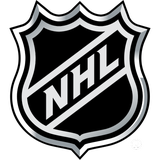
Complete guide to NHL realignment
Regular-season hockey returns this week, and you can be forgiven if it's sneaking up on you a bit.
The sport debuts at just about the worst time of year — NFL and college football are in full gear, baseball is headed for the playoffs, and then just when people start to accept hockey stealing some highlight market share, the NBA returns at the end of October.
There is at least one newsy wrinkle to the 2013-14 iteration of the NHL — realignment! Fun for sports ubernerds and traveling secretaries alike, let's break down why that standings page is looking so funny this year.
What exactly are the changes?
The league is going from a two-conference, three-division format, to a two-conference, two-division format. The Eastern Conference now consists of the Atlantic Division and the We Didn't Know What Else To Call It So We Called It The "Metropolitan Division" Division, both with eight teams. The Western Conference now consists of the Central and Pacific Divisions, both with seven teams.
Wait, one conference has more teams than the other?
Yes.
Doesn't that seem ... wrong?
Not necessarily. One of the main motivations for this realignment was to get teams together with others in the same or similar time zones. The vast majority of teams in the league are in the eastern and northern parts of the continent, so it makes sense to have a couple extra teams in the Eastern Conference.
Will the uneven number of teams affect the playoff structure?
No. Eight teams will make the playoffs from each conference, the top three in each division and two wild cards from either division. From a purely percentage-points standpoint, this makes it slightly easier to reach the playoffs out of the West.
So we should be happy about this?
That depends on you and whether you enjoyed a world where teams in Detroit, Nashville and Columbus played in the Western Conference. The previous alignment — though teams were spread evenly across the six divisions — didn't make much sense geographically.
Who can we blame and/or credit for all this?
The Winnipeg Jets. The franchise, relocated from Atlanta before the 2011-12 season, forced the NHL's hand to start thinking realignment. Even worse than the Red Wings being in the West, the Jets were stuck taking Atlanta's place in the Southeast Division.
Here is a map that prominently displays Winnipeg. It is not in the Southeast. It is very much north and central. This placed a great travel burden on the franchise — and, in an irony befitting of the NHL, travel burden in a league that was constantly expanding southward was a big part of why the original Jets franchise had to move away to Phoenix in the first place.
So the league had to do something. The NHL wanted it to happen before the 2012-13 season, but original proposals of a four-conference realignment were rejected. The winning proposal was accepted in time for this season.
Who gets most screwed in all this?
The Florida teams. That Southeast Division that was such a nightmare for Winnipeg was real cozy for the Tampa Bay Lightning and Florida Panthers once upon a time. Now? Atlanta no longer has a team, and the Carolina Hurricanes and Washington Capitals were both stripped away to the other division in the Eastern Conference.
That leaves Florida in the Atlantic Division with six very northern squads — Boston, Buffalo, Detroit, Montreal, Ottawa and Toronto. The closest city — Detroit — is a 2-hour, 40-minute flight from Tampa and three hours from Miami.
Commissioner Gary Bettman did his best to find a reason why this isn't a bad thing for those teams when he made the announcement back in March.
"From a business standpoint, I think this is probably really good for both Florida teams," Bettman said. "Competitively they may have their own issues, travel-wise they may have issues, but based on where Florida is from a geographic standpoint whatever we did wasn't going to be perfect."
So they'll probably lose a lot and spend a boatload on travel, but ... hey ... I'm sure it'll all work out. Keep in mind, this happened at a recent Panthers preseason game.
Canadian towns from Halifax to Victoria are ready to poach. Bring back the Nordiques!
Anything else of note?
The new alignment also helps ensure that every team will play in every arena at least once per season, something that did not occur under the old format. No more missing a favorite team or player because of scheduling quirks.
On the other hand, one of the big losses here is the separation of the Blackhawks and Red Wings into different conferences. One of the best rivalries in the game, the teams will only face each other twice in 2013-14 after meeting six times each in previous full seasons. Although it does present the tantalizing possibility of a Stanley Cup Final encounter between them.
Someone must have done a cool infographic to help me soak all this in?
Several have tried. This is probably the best, if only for the yeoman's work actually connecting the Florida teams to its division mates.


